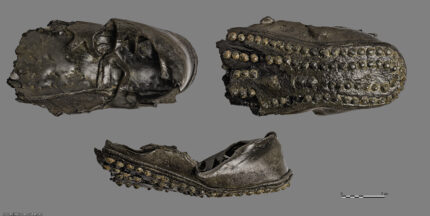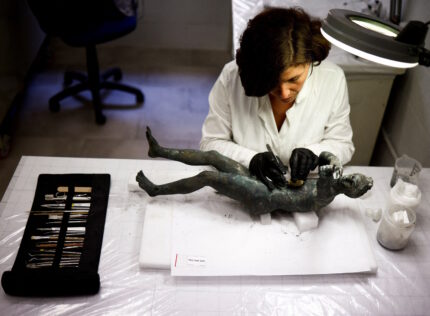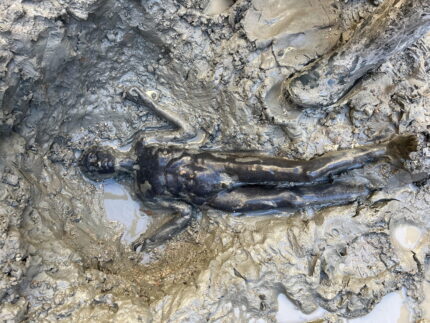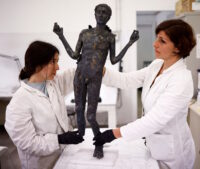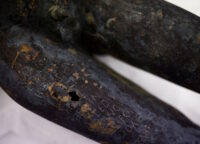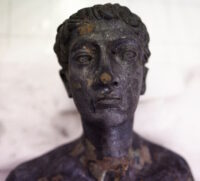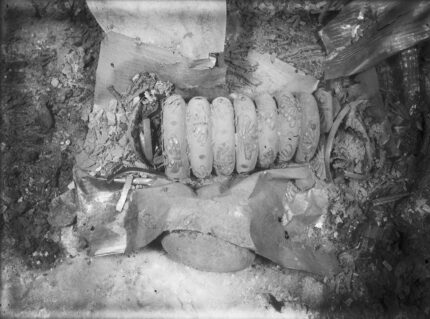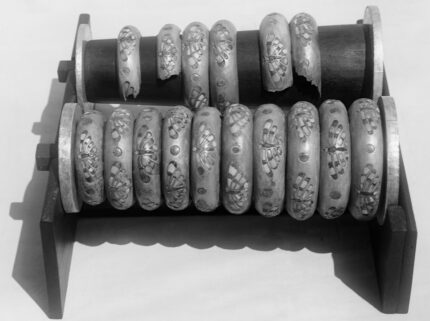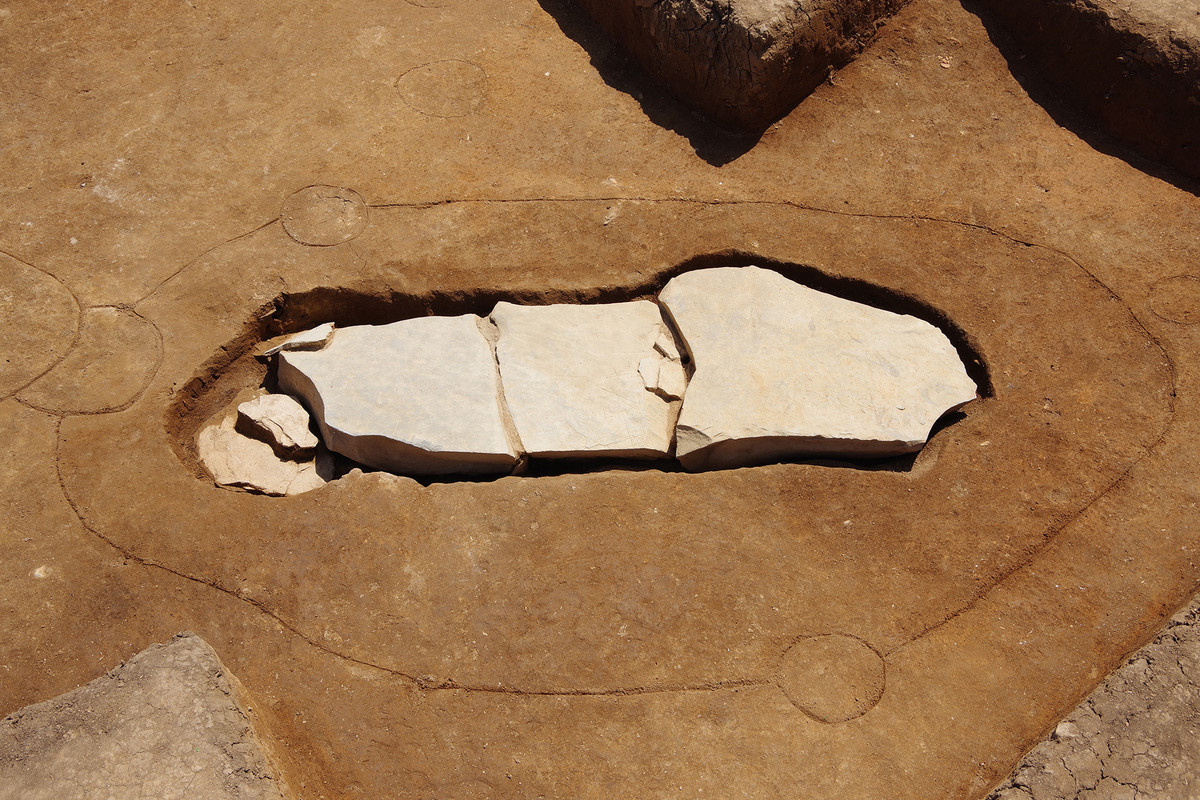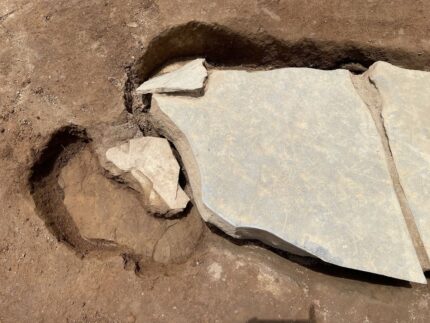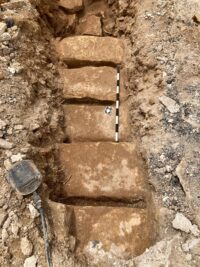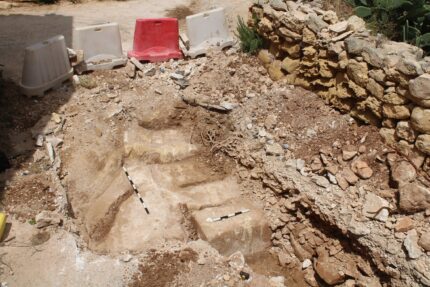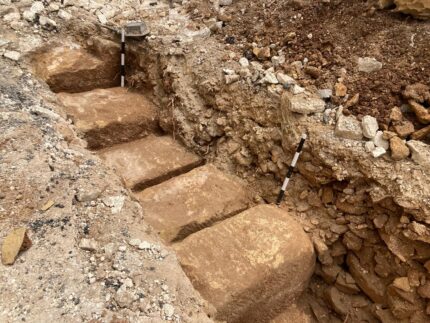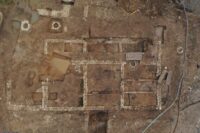 The remains of a well-preserved Roman artisan district have been unearthed in Thérouanne, northern France. The imperial-era remains were discovered at the bottom of a slope along the river Lys, whose alluvial deposits covered the site in thick layers of sediment, preserving organic remains including the wood structure of a canal, leather shoes and the bones of butchered cattle.
The remains of a well-preserved Roman artisan district have been unearthed in Thérouanne, northern France. The imperial-era remains were discovered at the bottom of a slope along the river Lys, whose alluvial deposits covered the site in thick layers of sediment, preserving organic remains including the wood structure of a canal, leather shoes and the bones of butchered cattle.
The remains consist of two buildings and the channel. The foundations of the first building are preserved, and the surviving height of them increases as they go down the slope. The southeast end close to the river is a chalk platform built on wooden piles. Archaeologists believe there would have been embankments of dry stone construction that functioned as a quay.
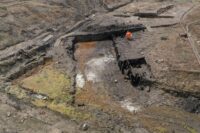 Much more is preserved of the second building. The original high walls are in place, as are the silt floors. These were common architectural features in ancient urban-adjacent working sites, but it’s extremely rare to find them preserved. A cylinder of blue glass and a furnace with a drip of blue glass identifies the building as a glassmaker’s workshop. There is evidence of several phases of occupation that indicate it was used over the course of centuries.
Much more is preserved of the second building. The original high walls are in place, as are the silt floors. These were common architectural features in ancient urban-adjacent working sites, but it’s extremely rare to find them preserved. A cylinder of blue glass and a furnace with a drip of blue glass identifies the building as a glassmaker’s workshop. There is evidence of several phases of occupation that indicate it was used over the course of centuries.
The canal channeling the Lys was built during the Early Empire and is the first of its kind discovered in the region of Nord-Pas-de-Calais. Its excellent condition allowed archaeologists to explore how a stable bank was built on the northwest slope of the Lys.
This bank takes the form of a succession of at least three bents (planks held together by piles), with a line of additional piles in the water. The canal is present in the right-of-way over a length of approximately 30 m and its relationship with the first building, partly laid out on the “quay”, remains to be highlighted.
The excavation of the levels located at the bottom of the canal is very complex because the constant rising of the water (the site was completely flooded three times during the intervention) prevents the stratigraphy from being recognized. However, the few tests carried out in the sediment yielded abundant and extremely well-preserved artefacts. There are many coins, small bronze objects with gilding, stilettos, brooches and fine golden brooches. Larger objects were also discovered such as gaffs (objects relating to shipping), keys, plates and metal rods, a large exogenous pebble and grooved in the length, which undoubtedly served as an anchor or ballast for a net.
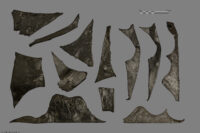 There were also large quantities of butchered cattle bones, many of them rejects sorted by the butchers to get tossed while the desirable cuts were sold, hobnailed leather shoes and leather scraps. The scraps are cut into shapes (mostly triangles) indicating a shoemaker and a tannery occupied the site, availing themselves of the butchery rejects and the river for their supplies.
There were also large quantities of butchered cattle bones, many of them rejects sorted by the butchers to get tossed while the desirable cuts were sold, hobnailed leather shoes and leather scraps. The scraps are cut into shapes (mostly triangles) indicating a shoemaker and a tannery occupied the site, availing themselves of the butchery rejects and the river for their supplies.
